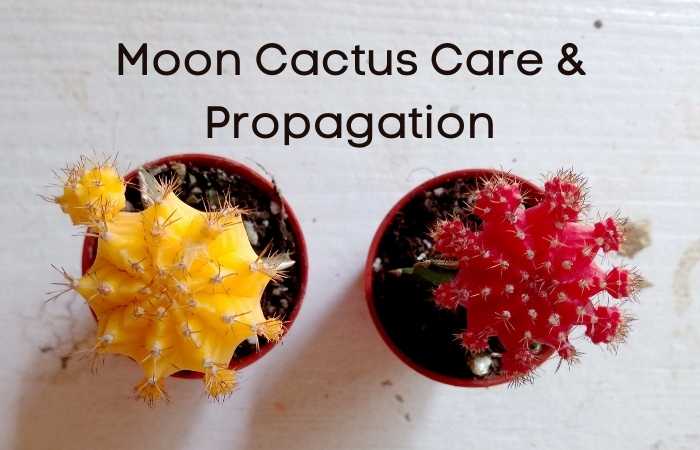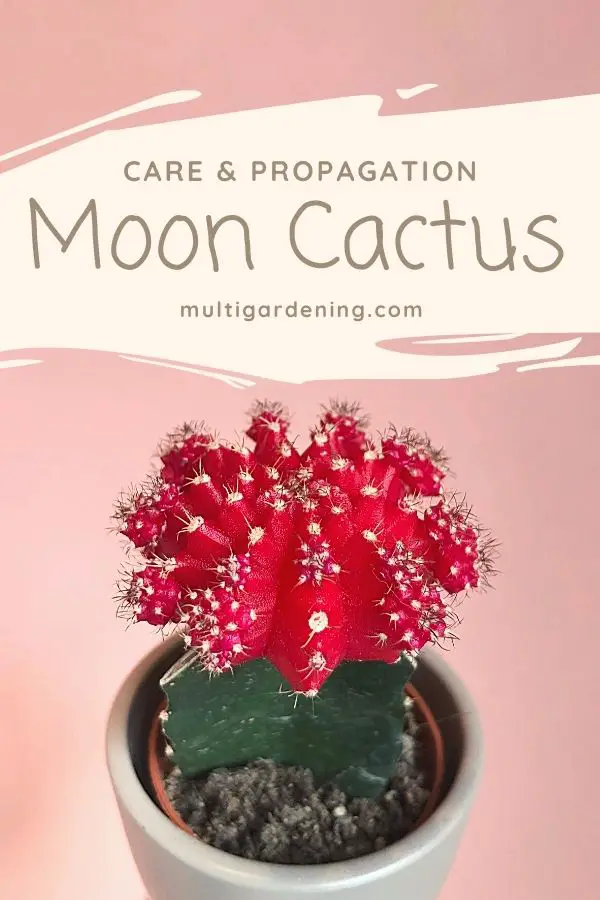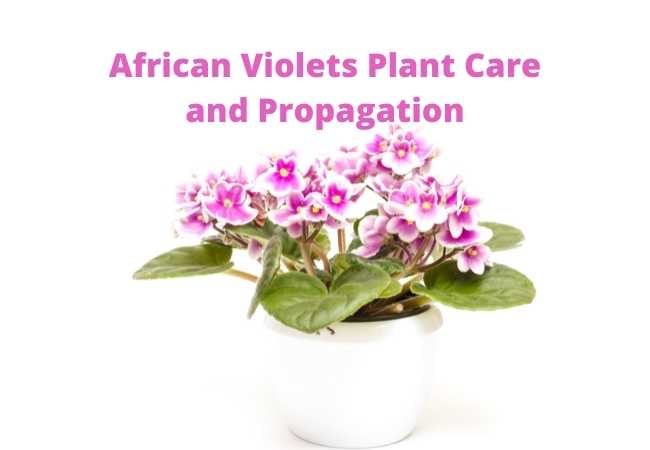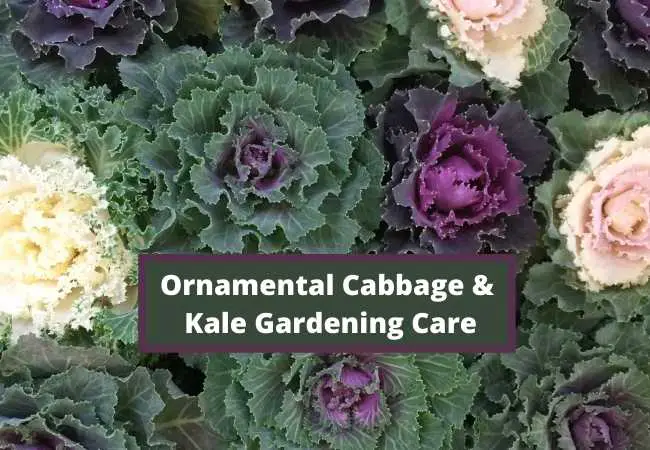Moon Cactus Care and Propagation

Moon Cactus care and propagation are easy once you master all the basics. The Moon Cactus is a grafted cactus. It is scientifically knowns as Gymnocalycium mihanovichii. In most cases, it has a Hylocereus base or rootstock, and the Gymnocalycium is the top. The beautiful and colorful top cannot survive without the base. It lacks chlorophyll which is what plants use to absorb light which is needed for photosynthesis.
It also goes by different names including the Ruby Ball cactus as well as the Red Cap cactus. Some people also refer to is as the Mutant cactus because it looks unnatural.
Moon Cactus Colors and Size
This awesome looking cactus is a popular indoor plant for plant owners looking for something different. It is a cactus that can die on you easily.
The Moon cactus is available in different colors. The most common are red, yellow, and pink. You can also find it in different orange hues, as well as some tie-dye colors.
The cactus can grow to about a foot tall. The height of your Moon cactus will depend on how the aggressive the rootstock is. The top can also grow wide but nothing too wide.
Moon Cactus Flowers
By themselves, the Moon Cactus already look unnatural. Most people who are not familiar with this cactus don’t think it’s a real plant the first time they see it.
The cactus also blooms which makes it even more interesting. It produces flowers that grow from the top. However, if you’re growing your Moon cactus indoor, you’re less likely to get it to bloom.
Moon Cactus Light Requirements
The cactus plant enjoys a bright shade spot. The plant doesn’t like to be placed under direct Sun. This allows them to thrive when kept indoors.
You can position them next to a bright window such as a South facing window. If your location is bright enough, you can grow your Moon cactus successfully without the need for artificial light.
Temperature
The Moon Cactus is not cold hardy. If you are growing your cactus outside, be aware that it does not do well in temperatures below 300 F. If you suspect that the weather will drop to freezing levels, you are safer bringing your plant inside.
Watering Moon Cactus
To have a thriving Moon Cactus, you need to be conscious of your watering routine. How you water the plant will determine if it will be able to hold its shape.
Limiting the amount of water will help you not only maintain the compact shape but also have normal growth. The Moon cactus is susceptible to root rot. This is most likely because it’s a grafted cactus.
Succulents with thick stems and leaves can stay longer without requiring water. The Moon Cactus has a thick stem making it quite tolerant of drought.
The best way to water the cacti is to allow them to dry out and then water them thoroughly. This method is known as the dry and soak method and works well for most types of succulents.
Most succulents, you soak the soil completely when you notice the top layers are dry. However, for the Moon cactus, after you notice the soil is dry, give it 5-6 days more before watering.
This is also one of the houseplants that you want to error on the side of not watering enough rather than too much watering.
If you underwater, the plant will not grow but will remain compact. However, if you over water, it will rot. Once it starts to rot, it is super difficult to save it.
During winter the plant is not actively growing compared to the summer. Cut back on watering during winter months.
Moon Cactus Problems
- Rotting
One of the issues that Moon Cactus owners experience is rotting. These plants should be treated independently. Sometimes plant owners will provide general care for their plants such as watering them all the same at the same time.
The Moon cactus requires individualized care. I have had several Moon cacti receiving the same care and put right next to each other and one will die and the other thrive.
As stated above, if you overwater your plant, it will rot and eventually die.
- Diseases and Pests
The Moon Cactus can grow to maturity without any problems of pests and diseases. Similar to many other cactus types.
However, the plant can still be attacked by the common pests and diseases especially when kept close to other infected plants.
Best Pots for Moon Cactus
The best pots for Moon Cactus are clay pots. The pots can save you if you happen to overwater once in a while.
Propagating Moon Cactus
Moon cactus are propagated through grafting. The mature Moon cactus produces offsets that grow from the top part. They are of a similar color to that of their mother.
To graft the small offsets, you need a rootstock and a clean blade. Cut the rootstock into a sizable length often a few inches using a clean and sterile blade.
Stick it into a pot filled with succulent potting mixture. Sterilize the blade and give the top part a fresh cut making sure it’s completely flat. Give the sides slanting trims.
Give the colorful moon stock a cut at the bottom and get a flat end as well. Place it on top of the rootstock and make sure the tiny circles at the center of each of them are aligned perfectly.
Press it down and use rubber bands, or tape to hold it in place. Water the arrangement and move it to a shaded place.
It’s important to note that the Moon Cactus takes a long to develop offsets. Also, the process of grafting can be quite challenging especially for beginners. If you’re looking for new plants, you are probably better of buying those that have already been successfully grafted.
Repotting Moon Cactus
Moon Cactus are super slow growers. Even the mature plant is not that big. They can comfortably grow in one pot for a long time.
The only time you might need to repot the Moon cactus is when you get it the first time. This is one of the cactuses that you can grow in small pots unless you want to grow them in groups.
When repotting Moon Cactus, use normal succulent soil mix. This type of soil is porous and drains fast. This is important because it prevents the cactus from getting root rot.
Make sure that you give the cactus a good drink after potting.
Moon Cactus Poisonous
The moon cactus is not poisonous to pets and humans. However, the cactus has sharp spines on the rootstock as well as the top.
The spines can cause harm to kids and pets and it’s always safer to keep it out of their way.
Final Thoughts
If you’re considering getting a Moon Cactus, you should get one or two. It’s an awesome, gorgeous cactus that can be grown successfully both indoor and outdoor.
It is also a great conversation starter and a great home décor plant. Because they are small in size you can put them in cute pots and place them on tables, shelves, and countertops.
I hope you found this post on Moon Cactus care and propagation useful. If so, please share it and also follow me on Pinterest for more useful posts on flowers.






